Occasionally, a brand develops a simple idea with the potential to have wide-ranging effects on the market, and the Zwift Cog could be one of those.
In its purest terms, the Zwift Cog is just a singlespeed conversion kit for the Zwift Hub smart trainer.
Given the Hub’s new virtual drivetrain capabilities, though, and its compatibility with almost any 8- to 12-speed bike, it feels like a big step forward in making indoor cycling simpler and more accessible.
Upending the state of smart trainer compatibility

As things stand, practically every direct drive smart trainer on the market is specced with a Shimano Hyperglide-style freehub as standard.
As freehub standards go, this is a good choice for the most part, because it's the standard with arguably the widest compatibility in terms of cassettes.
While some brands, such as Wahoo, include a cassette with their smart trainers, most require you to buy your own cassette and, in some cases, a different freehub, too.
As well as increasing costs, this adds complexity. Unless you’re a chronic bike nerd (like me), it can be hard to know whether the expensive trainer you’re buying will work with whatever bike you have at home.
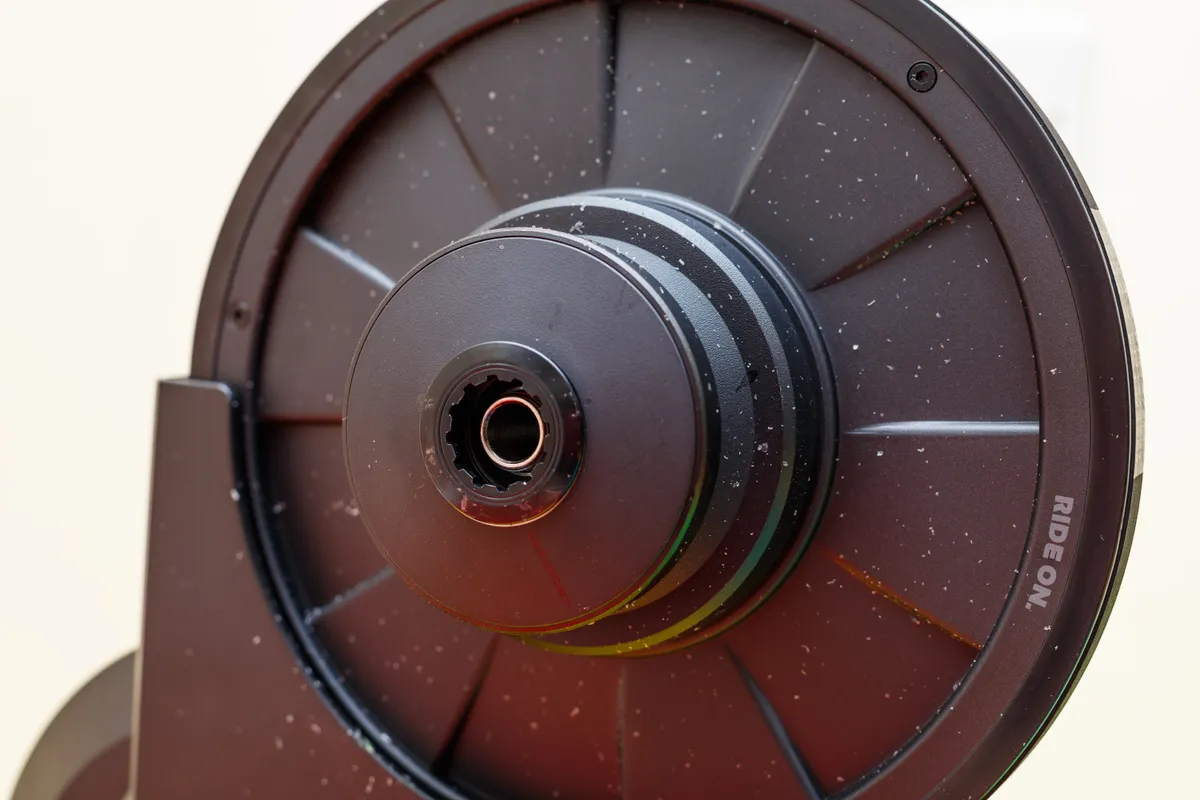
While knowing exactly what freehub, spacers and cassette you’ll need may seem obvious to seasoned cyclists, it may not be so to less experienced ones.
It’s even less likely inexperienced cyclists will have the tools or mechanical know-how to replace a cassette or freehub, either.
The Zwift Cog – which replaces a standard cassette with a singlespeed, 14t cog and two plastic bumpers – solves these barriers to entry in one fell swoop.
Zwift says it’s compatible with “almost any” bike with an 8- to 12-speed drivetrain.
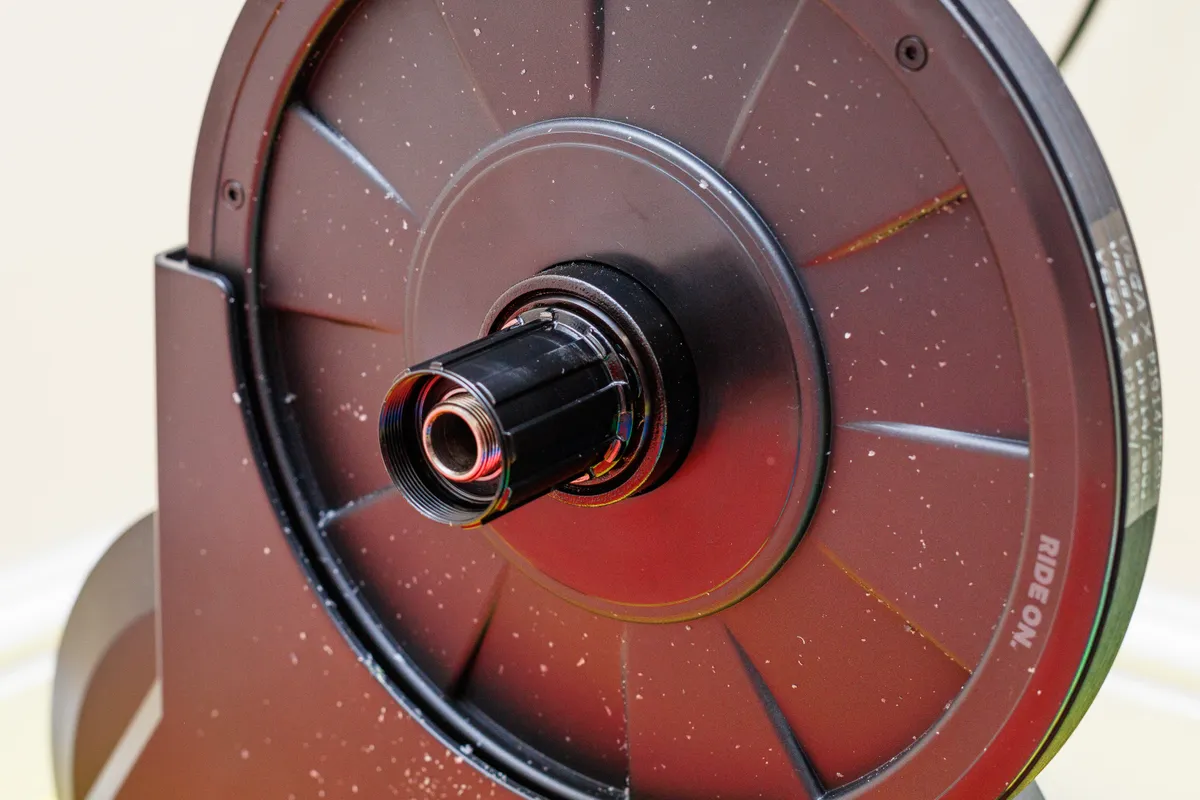
And given practically all modern road, gravel and mountain bikes have an 8- to 12-speed drivetrain, chances are, if you have one, it will work with the Zwift Cog.
For riders or families lucky enough to have multiple bikes, it also streamlines the process of using them on the same trainer.
Since I’ve started using the Zwift Hub One, equipped with a Ziwft Cog, I’ve been able to seamlessly swap my Zwift setup between my 11- and 12-speed equipped bikes with no trouble at all.
All that was required was the use of the included 17mm spanner to swap the axle adaptors between 135mm quick-release and 142mm thru-axle (and, as noted in my original Zwift Hub review, Zwift includes its excellent colour-coded adaptors and measurement cards to help smooth this process, too).
Zwift’s virtual drivetrain
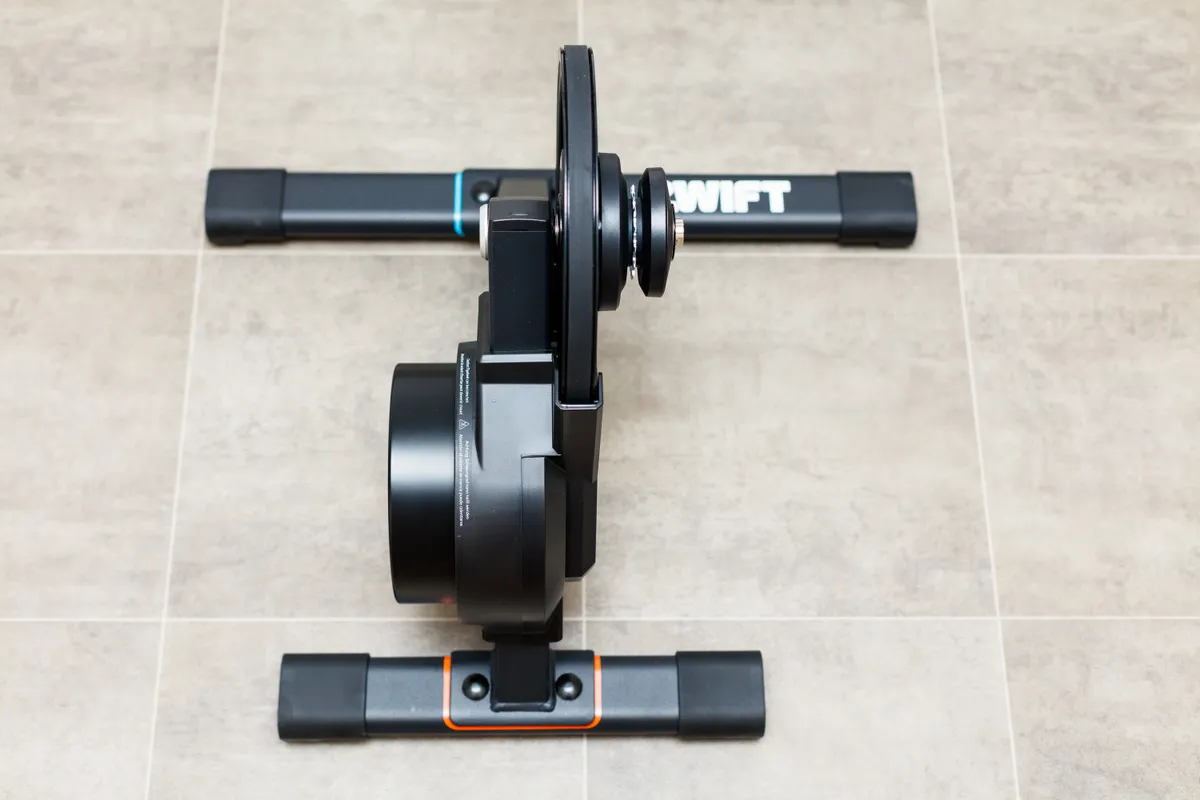
Alongside the Zwift Cog, Zwift has also updated the Hub’s firmware to enable the use of a virtual drivetrain.
This is critical. As you may have already worked out, ditching the cassette and converting to a singlespeed cog leaves you with only one gear at the rear.
The Zwift Hub does this simply by controlling the resistance you feel at the trainer, similar to how it would during an ERG mode workout.
There are no electronics in the Zwift Cog itself. It’s simply a single cog sandwiched in between two plastic bumpers, mounted on an otherwise standard Shimano HG freehub.
The Zwift Cog (and Zwift Hub One, which is a Zwift Hub with the Cog pre-installed) ships with a wireless virtual shifter called the Zwift Click. This uses a simple two-button layout, with for a harder gear and - for an easier gear.
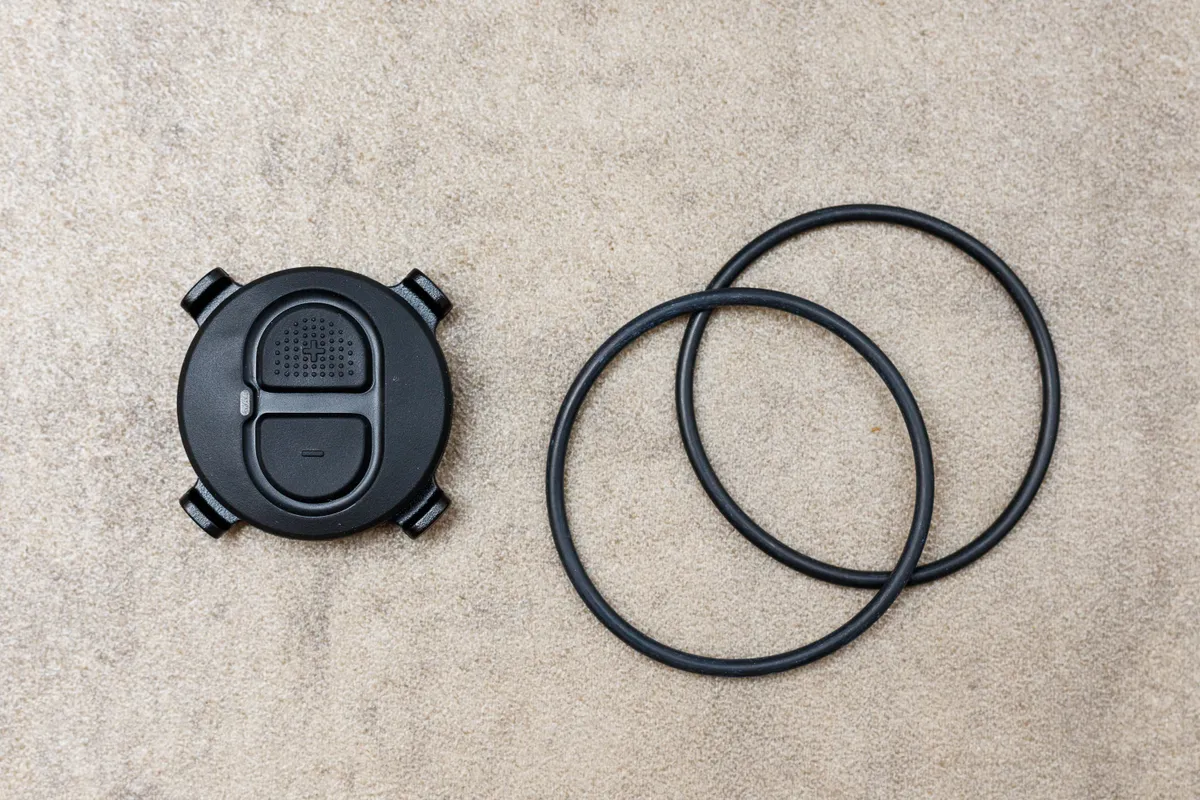
The Hub’s virtual drivetrain has 24 discreet gears, with an enormous range equivalent to a 30x40t easiest gear all the way up to 55x10t at the top end.
As promised, the gaps between the gears are small, there are no duplicate gears (as there typically are on a 2x drivetrain), and shifts are completely silent and can be performed under load.
You can also shift using the Zwift Play controllers, and have both the Play and Click controllers connected simultaneously, if you choose.
Overall, the implementation is very impressive.
It feels a little less ‘realistic’ because you’re not using your bike’s gears in the same way you do in the real world, simply modulating the trainer’s resistance.
But the effect is subtle and you quickly get used to it.

The simplicity of the easier/harder shifting logic – as opposed to shifting between two chainrings combined with a rear cassette – also feels more accessible to less experienced cyclists.
Whenever you mount a bike to the Cog, Zwift automatically calibrates the gear range to your bike’s chainring.
This means you get the same gear range in Zwift, no matter what gears the bike you’re using has.
There’s no need to manually enter your chainring size or anything like that – you simply mount the bike and the Hub works it all out as you start your ride.
In practice, switching between my 2021 Giant TCR Advanced Pro Disc, which is equipped with a 12-speed, 2x drivetrain with a 36t inner chainring, and my 2009 Giant TCR Advanced SL, which has a 38t 1x chainring, posed no issues.
I simply swapped the axle adaptors, started the app as normal and seamlessly began riding.
In terms of noise, the less-profiled, more workmanlike teeth on the Cog are a little louder than the middle cogs on a high-end road cassette.
However, changing gears with an on-bike drivetrain can cause a surprising amount of noise, especially when doing so under load (as you would when shifting down multiple gears on the cassette at the start of a sprint, for example).
Eliminating these shifts therefore helps make using the Hub noticeably quieter overall.
What downsides are there to the Zwift Cog?
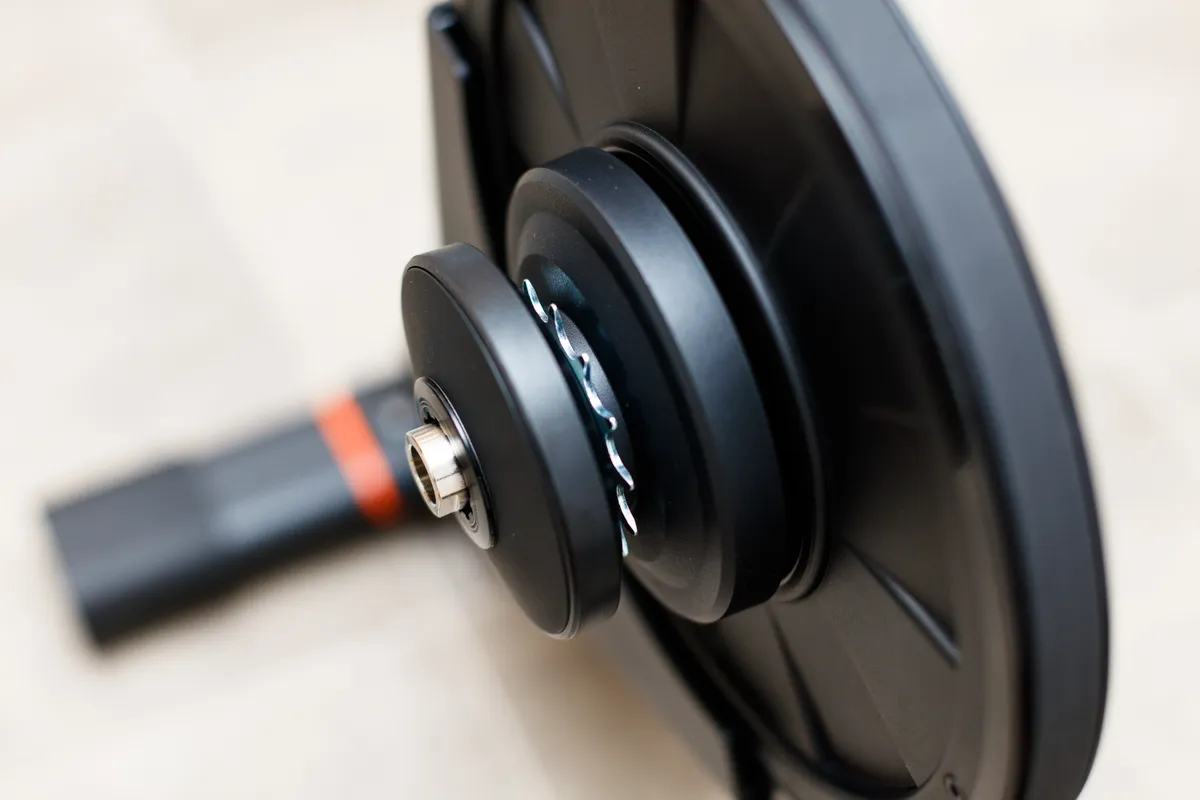
The only major downside to the Zwift Cog is the fact that, as things stand, it’s only compatible with the Zwift Hub.
Physically, it may fit similar trainers, such as the JetBlack Volt or the Pinnacle HC Turbo Home smart trainer. Given the virtual drivetrain is simulated by the Hub trainer itself, though, the Zwift Cog on its own wouldn’t be much use on those.
At first glance, this seems a shame because indoor cycling gadgets have, for the most part, been fairly platform-agnostic previously.
Wahoo’s Kickr Climb and the Elite Sterzo Smart, for example, can be used with practically any indoor cycling app.
On the other hand, as a manufacturer of both hardware and software, there’s little incentive for Zwift to develop this tech to be used with competitors' products.
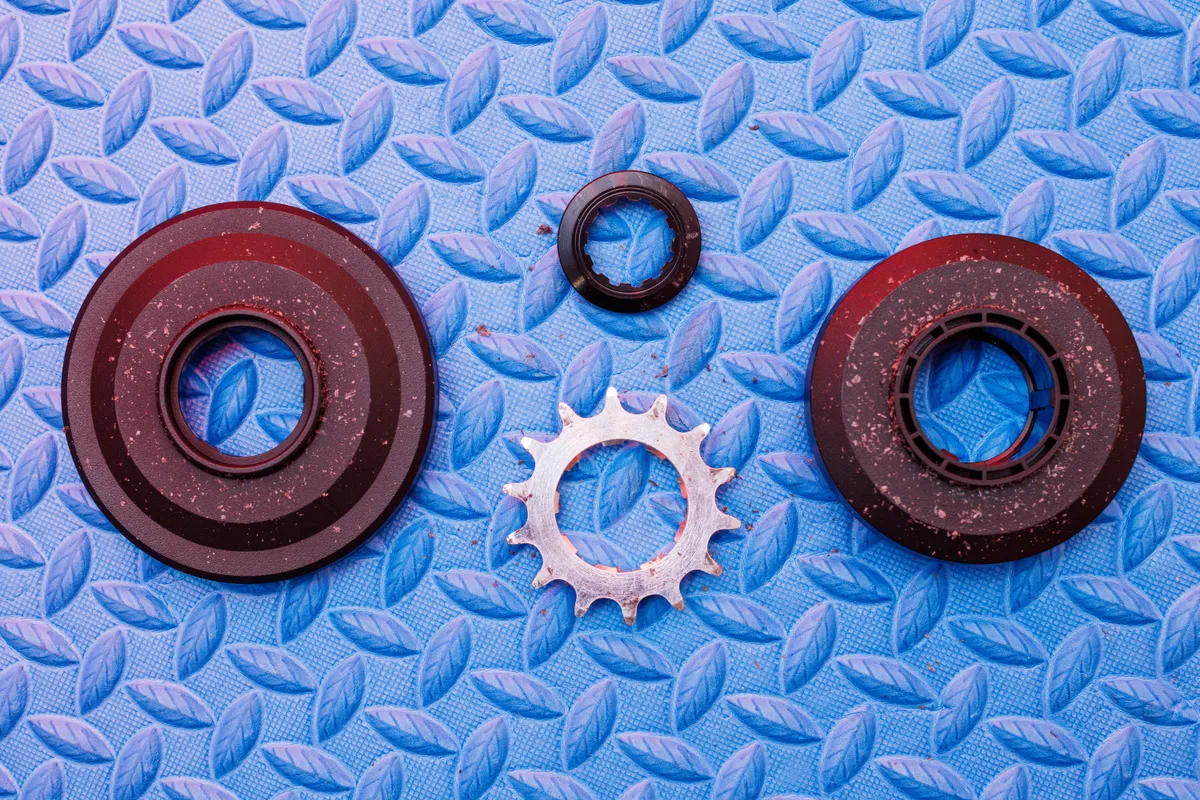
Zwift can hardly be faulted for developing new tech and features to drive engagement with its own platform.
When Wahoo launched its Kickr Steer device earlier this year, it was designed exclusively for use with Wahoo RGT, after all.
And though you’re tied to the Zwift app if you want to use the Cog and the Hub’s virtual drivetrain, the Cog can be disassembled using a chain whip and cassette lockring tool, to allow the use of a standard cassette.
With a cassette in place, the Zwift Hub functions like any other smart trainer and can be used with any device and platform that supports its Bluetooth or ANT protocols.
This means you’re not locked into the Cog and virtual drivetrain system when purchasing a Zwift Hub One, either.
More like this, please

Just when it appeared that smart trainer tech had reached something of a plateau, the Zwift Cog and the Hub’s virtual drivetrain feel like welcome innovations.
Virtual drivetrains already existed on many of the best smart bikes, for example, but using them as a tool to simplify and widen the compatibility of the Zwift Hub was a clever idea.
Hopefully, manufacturers of other apps, such as TrainerRoad, Rouvy and Wahoo SYSTM, can implement support for the Hub’s virtual drivetrain into their systems going forward.
It would also be great to see other smart trainer manufacturers take inspiration from Zwift to make their devices simpler and easier to use, too.
With so many options available, knowing exactly what you need to get started with a smart trainer and an indoor cycling app could be tricky.
Even if, as a more experienced rider, you knew what you needed to do, the hassle of needing to swap cassettes and potentially a freehub, to get your bikes to fit a trainer could be frustrating or unappealing.
The best thing about the Zwift Hub One and Zwift Cog, then, is how easy it makes getting started with indoor cycling and enjoying the benefits of indoor training. You take off your rear wheel, mount your bike, connect to the Zwift app and that’s it, you’re ready to go.


